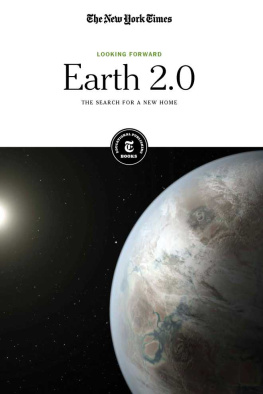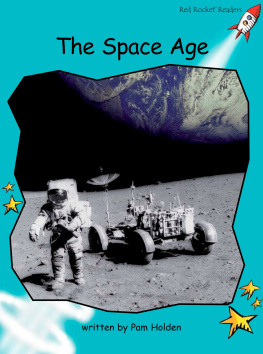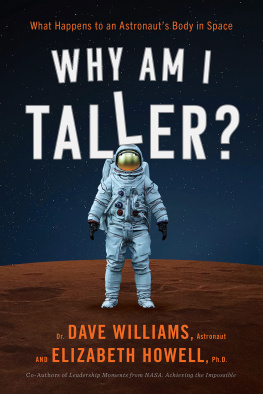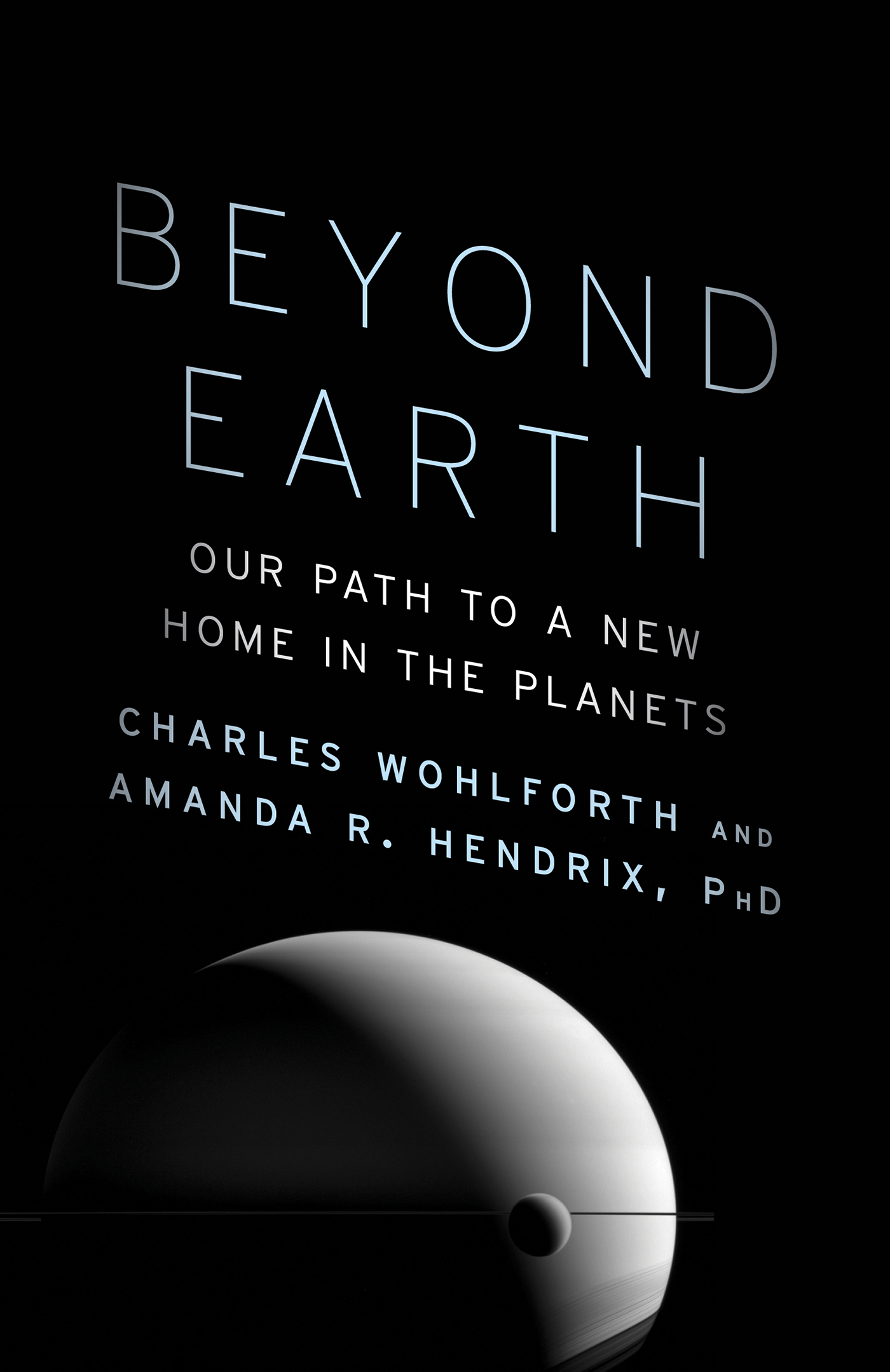
Copyright 2016 by Charles Wohlforth and Amanda R. Hendrix
All rights reserved. Published in the United States by Pantheon Books, a division of Penguin Random House LLC, New York, and distributed in Canada by Random House of Canada, a division of Penguin Random House Canada Limited, Toronto.
Pantheon Books and colophon are registered trademarks of Penguin Random House LLC.
Library of Congress Cataloging-in-Publication Data
Names: Wohlforth, Charles P., Hendrix, Amanda R.
Title: Beyond Earth : our path to a new home in the planets / Charles Wohlforth and Amanda R. Hendrix, Ph.D.
Description: New York : Pantheon Books, 2016. Includes index.
Identifiers: LCCN 2016018868 (print). LCCN 2016009498 (ebook).
ISBN 9780804197977 (hardcover) ISBN 9780804197984 (ebook).
Subjects: LCSH : Manned space flight. Astronautics. Space flightPhysiological effect. Space flightPsychological aspects.
Classification: LCC TL 790 (print). LCC TL 790 . W 63 2016 (ebook). DDC 629.45/5dc23. LC record available at: lccn.loc.gov/2016018868
Ebook ISBN9780804197984
www.pantheonbooks.com
Cover design by John Vorhees
Cover photograph courtesy Carolyn Porco and the Cassini Imaging Team NASA/JPL-Caltech/Space Science Institute
v4.1_r1
ep
Contents
To Charles F. Penniman,
my gentle guide, whose life has unified science, spirituality, and compassion.
CHARLES WOHLFORTH
To all of the fantastic, dedicated people working so hard on the Cassini mission and all robotic and human missions at NASA and other space agencies: you inspire the world with these journeys and incredible scientific discoveries.
AMANDA R. HENDRIX
INTRODUCTION
THE WAY OFF THE EARTH
Someday, people will live on Titan, the largest moon of Saturn. Their energy will come from burning the unlimited supply of fossil fuels on its surface and their oxygen from the water ice that forms much of Titans mass. The nitrogen atmosphere, thicker than the Earths, will protect them from space radiation and allow them to live in unpressurized buildings and travel without spacesuits, in very warm clothes with respirators. They will go boating on lakes of liquid methane and fly like birds in the cold, dense atmosphere, with wings on their backs.
This will happen because, at a certain point, it will make sense. Today, the cold, gloomy Titan skies are unappealing and impossibly distant. We do not yet have the technology to put people on Titan. But the technology is coming at the same time the prospects for the Earth are getting worse. In earlier times, human beings struck out for strange and dangerous new places when their homes became intolerable. If humanity doesnt change course on this planet, a new world free from war and climate upheaval could someday draw colonists to Titan in the same way.
The technology required for a space colony is already visible. The largest barriers are institutional. An indifferent political establishment. A space agency, NASA, with a culture that squelches dissent and that lacks a coherent goal for human spaceflight. News media that have sold the public a false understanding of the real challenges of space exploration. Going to another planet will be difficult and, without breakthroughs, unacceptably dangerous.
But the ingredients for a space colony are coming together. Experience building space vehicles has spread to many countries and private industry. An Internet-spawned innovation culture that knows how to make new things fast has turned its attention to space. The concepts needed to get us there have been thought out already.
When the moment comes, it wont be the first time human beings have embarked on a voyage that seemed impossibly difficult, expensive, and technically challenging. Our kind repeatedly built new societies in places so remote as to forbid return. When we do it again, well probably have reasons similar to those they had then.
As authors, we have investigated science and technology as well as culture and the environment to construct our scenario about space colonization. We have pondered the fundamental issues facing humanity: our response to technology; our will to explore, expand, and consume; and how we treat one another and treat the world we already have. The most important ingredient for space colonization is the human animal: our cellular response to cosmic radiation, our psychological ability to travel for years through nothingness, and our ecological fitness for a new landscape where no organism has lived before (at least no organism we know of). What are we? How far can we go?
Scientists we interviewed often asked if we were writing science fiction or journalism. We never intended to write a work of imagination, but a skeptic would never have predicted what has already happened. We visited a rocket factory floor where private space industry workers were sewing astronaut suits that Captain James T. Kirk would have been proud to wear. Our scenario is not based on a love of cool inventions and inspiring visions. It relies on our knowledge of peoples tendency for dumb decisions, selfish drives, and messy politics. Recognizing these predictable truths makes it easier to see how technology could unfold, and more interesting and funnier, too.
Weve had tremendous fun thinking and arguing about how this will happen. The work developed while we laughed together for many hours on Skype, Amanda at her office or kitchen table in Los Angeles and Boulder and Charles in a home office facing his snow-buried boat in Anchorage or in the Alaska wilderness.
Amanda works with space technology every day. She has practiced to become an astronaut and has managed equipment to capture the scenery of a world on the other side of the solar system. She has also navigated the bureaucracy of big science, a universe of meetings, travel, and egos like any modern organization. Laboring over the myriad details of new ideas, she has helped make the miracle of space exploration real.
Charles spends summers off the grid on an Alaskan beach and in winter he cross-country skis almost every day. His books seeking to understand the fate of the planet have taken him to the Arctic pack ice with Eskimo whalers and to a Cambridge, England, aviary with supersmart birds.
Were complementary opposites. Amanda brings the science and the wonder, but also an awareness of how technology unsteadily unfolds. Charles brings the skepticism of one who has studied human tragedy on Earth, but also the optimism of one who loves the nature in us all. Amanda would eagerly accept a one-way ticket off the Earth to fulfill her drive for adventure and her vision for the future. Charles can hardly sit still through a red-eye flight and cannot imagine saying good-bye to the snow, sea, and fresh air of this world.
Well never be rich enough to send everyone off to another celestial body, but it isnt hard to imagine a day when governments or the very rich begin thinking of a spaceship as a lifeboator an ark. People are already thinking that way. In 2008, the Svalbard Global Seed Vault opened, deep inside a frozen mountain on an island halfway between Norway and the North Pole, to preserve millions of plant lines in case of disaster or apocalypse. An off-world colony would likewise shield a store of human genes out of the way of any earthly harm.










